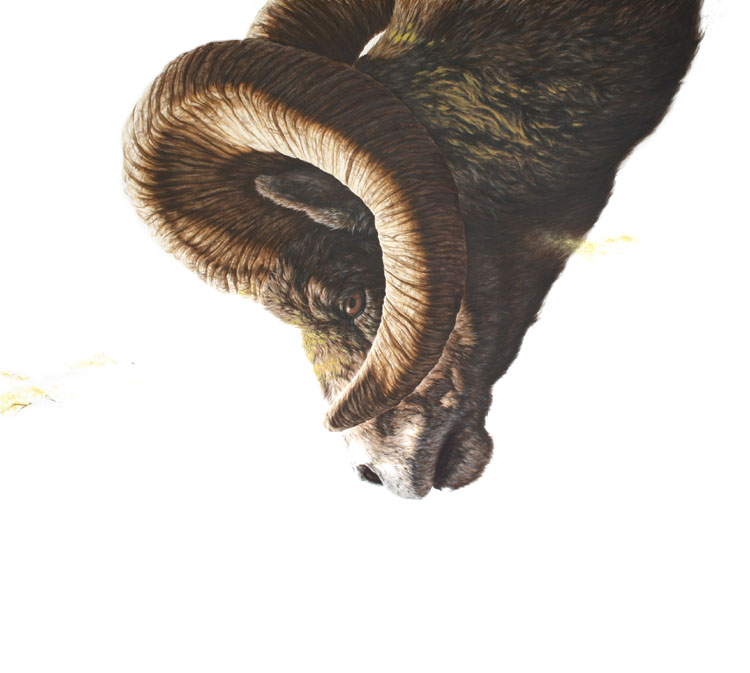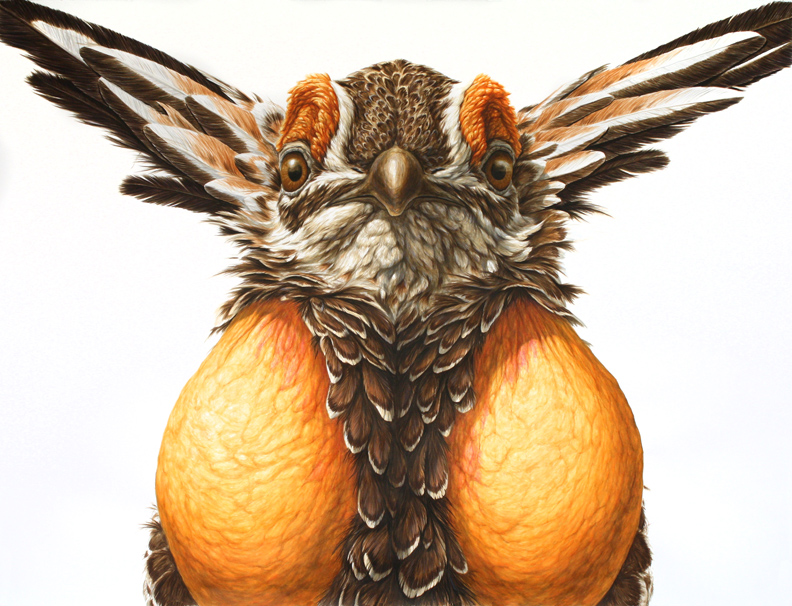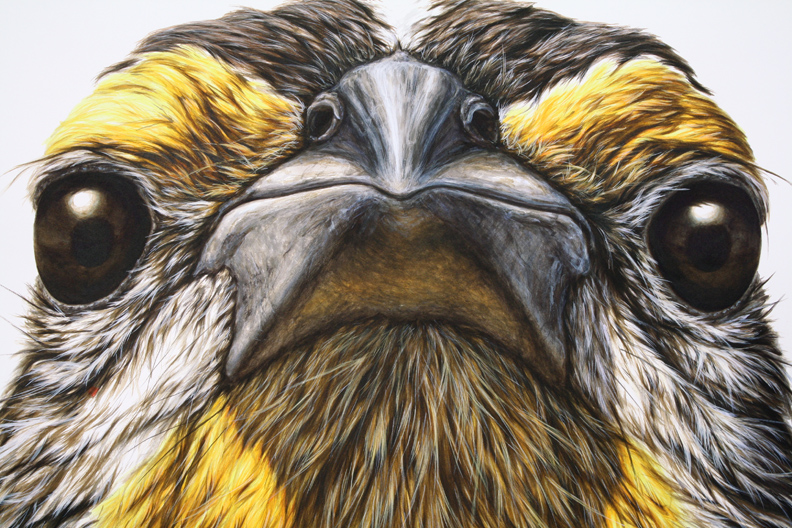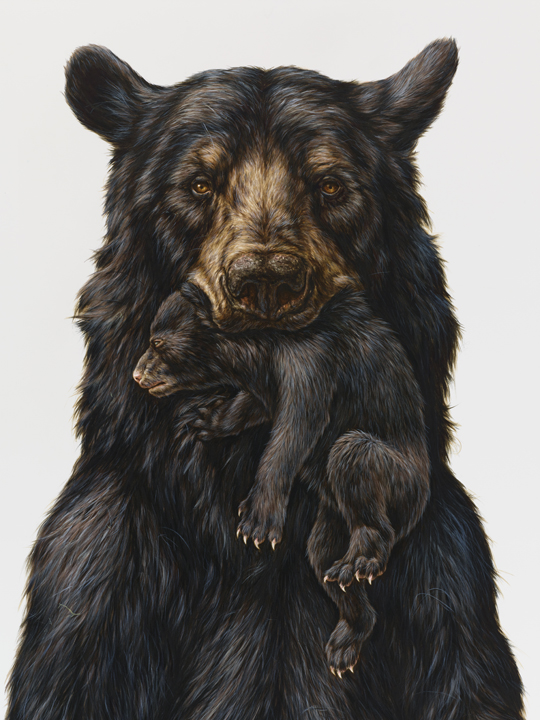
Initiate, 48″X53″ ink on paper, 2011
Arthur Seen: I can’t help but to think of a Möbius strip when visualizing your path towards becoming a Brooklyn based artist. Raised in NJ, going to Miami to pursue a career in Marine Biology, receiving a BFA in painting instead, then back north to NYC via Alaska>North California>Las Vegas to earn an MFA from SVA. How did such a seemingly extemporaneous journey result in the incredibly controlled and informed ink drawings you’ve come to be know for as an artist?
George Boorujy: I like thinking about it that way – an aerial view of me running around like a spaz. I think all that time was very necessary to the work and to my life, which really are one and the same at some point. I was pretty aimless after college, as a lot of people are, and I didn’t exactly know the steps towards what I wanted. I didn’t even know what I wanted, actually. My knowledge of the art world was incredibly limited. One, because I was in Miami, which at the time wasn’t what it is now artistically speaking, and two – I wasn’t all that interested. I liked making work, but as far as what other people were making, or criticism, or galleries, I was ignorant. It makes me sound like a snot, but really I was into other things, and just sort of young.
When I left Miami, I went with a couple friends to Alaska for the summer to work in the fishing industry. It was fun and hilarious and I have a lot of great stories from that trip. After that I spent another few months just driving around, camping, exploring. I think this time really honed what I was interested in. I had ALWAYS been interested in animals and science, but the opportunity to explore a continent free of any agenda, really helped.

Fugue, 38″X50″, ink on paper, 2010
I realize now how different things were then. There were no cell phones – not for me at least – and gas was so cheap. It’s much more difficult now to get off the grid, less time to think without distraction, therefore less time to truly concentrate and develop ideas. And it would be much more difficult now for a broke student to free-wheel it.
That concentration is probably evident in how “controlled and informed” the drawings are. I always drew pretty realistically. It came easily. But that also meant I could kind of “fake” parts of drawings to make them look good, without really doing it right. I’ve become much more concerned with the drawings really working from every aspect and the animals are deeply researched.

Heath Hen, 38″X50″, ink on paper, 2014
Arthur Seen: I was surprised to read, in the text accompanying your current exhibition, that your drawings “are first sculpted and then painted with ink” . What is your workflow? Do you work from photographs, life, memory, all of the above?
George Boorujy: I look at a ton of photos on google, and have books and other images. I’ll go to the zoo or the Museum of Natural History. There are no photos of the images I make so I have to eventually just figure it out myself. Which I prefer. I’ll have a really specific position in my mind that I’d be unable to achieve unless I killed a lot of animals, Audubon style, and posed them exactly how I want them. So what I tend to do more and more often is make a sculpture of the piece first. Nothing very detailed, but enough so that I can see how the light should look and to help me make compositional choices for the finished drawing. Then I start drawing. When I move on to the actual ink everything major has to be decided because you can’t change any marks. When the ink goes down, it’s down. That’s it.

Anting, 55″X108″, ink on paper, 2011
Arthur Seen: The animals in your drawings, their gestures and postures, are extremely welcoming yet unnervingly unnatural at the same time. I find it hard to describe… could you help me here? Is there a message or a feeling that you’re trying to convey?
George Boorujy: When working on the gaze of the animal, I try very hard for a neutral expression. I am interested in the interaction of the viewer with this animal. If I make it too mad, or happy, or sad then it’s not that interesting. When it is impassive, it can become more like a mirror and the viewer can read into it what they want. I’ve had people describe the same piece as looking happy or sad or proud or angry or tired.
The positioning is very complicated. I am usually trying to do something or convey a mood or an attitude. Often I’m trying to get the viewer to see an animal in a way they haven’t before so that they slow down their processing of the image and it can become a bit more meditative and reflective. There’s usually some other things I’m thinking about as well when it comes to positioning an animal. The piece of the descending ram, Initiate, for example. We associate rams with sacrifice, and the position of it alludes to stringing up an animal for slaughter – ritual or otherwise. It is doused with pollen too, which also asks a question as far as what this animal is involved in. Or it could be falling. Or just the head is coming down. It’s up for interpretation.

Babble (detail), 38″X50″, ink on paper, 2012
Arthur Seen: What would your advice be to a young person, setting off to pursue a career in wildlife science today? What advice would you have for young people considering moving to New York City to embark on a career in the arts?
George Boorujy: There’s one piece of advice that applies to both fields – learn how to be a grant writer. I wouldn’t have any advice for someone going into the sciences. I switched out into art real early in my pursuit! Coincidentally, I was asked the moving to New York question yesterday. I recommend it. It is so expensive, and can be really hard. But there are so many random opportunities that can come your way, and being here is essential to be able to take advantage of those opportunities. There are other good art communities, that’s for sure, and you can have a career in the arts in many different places. But I suppose there really is only one New York. And no other place quite like it.

Appalachian (detail), 80″X49″, ink on paper, 2014

Like the story of how you got from there to here. Just the organic nature of an artist’s journey.
And very cool work.
“I look at a ton of photos on google, and have books and other images. I’ll go to the zoo or the Museum of Natural History. There are no photos of the images I make so I have to eventually just figure it out myself. Which I prefer. I’ll have a really specific position in my mind that I’d be unable to achieve unless I killed a lot of animals, Audubon style, and posed them exactly how I want them. So what I tend to do more and more often is make a sculpture of the piece first.”
So interesting to hear about his creative process. Looking at the works on their own, it didn’t occur to me that Boorujy isn’t drawing any of this based on real pictures, because his drawings look so realistic. The angles he chooses and absence of scenery have an uncanny impact.